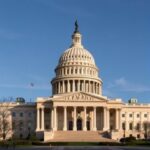Government Shutdown Looms Over WIC and Head Start Funding: Thousands of Families Face Uncertainty
As the federal government shutdown stretches into its third week, critical Federal programs like the Special Supplemental Nutrition Program for Women, Infants, and Children (WIC) and Head Start are staring down imminent funding cutoffs. With Congress unable to bridge partisan divides on budget negotiations, these lifelines for low-income families nationwide are at risk of halting operations, leaving millions without essential nutrition and early education support. Experts warn that the ripple effects could exacerbate food insecurity and developmental setbacks for vulnerable children, turning a political standoff into a humanitarian crisis.
WIC’s Lifesaving Services Hang in the Balance
The Women, Infants, and Children (WIC) program, which provides nutritional assistance to nearly 6.2 million low-income pregnant women, new mothers, and young children each month, is one of the first casualties of the ongoing shutdown. Administered by the U.S. Department of Agriculture (USDA), WIC relies on federal funding to distribute vouchers for healthy foods, nutritional counseling, and healthcare referrals. Without new appropriations, state agencies that run the program could exhaust their reserves as early as next week, according to a USDA contingency plan released last Friday.
“We’ve been preparing for this nightmare scenario, but the reality is stark,” said Dr. Elena Ramirez, director of a WIC clinic in Chicago. “Families depend on us for milk, fruits, and veggies that keep their kids healthy. If funding stops, we’re looking at shuttered offices and denied benefits for hundreds of thousands.” Ramirez’s clinic alone serves over 2,000 participants, many of whom are already stretched thin by rising grocery prices.
Statistics paint a grim picture: WIC prevents an estimated 1,400 premature births annually and saves the healthcare system $1.77 for every dollar invested, per a 2022 Government Accountability Office report. Yet, with the shutdown delaying fiscal year 2024 appropriations, 90% of WIC’s budget—about $6 billion—remains frozen. States like California and Texas, which host the largest caseloads, have warned of immediate disruptions. In Texas, for instance, over 500,000 women and children could lose access, potentially leading to increased emergency room visits for malnutrition-related issues.
Advocacy groups are mobilizing. The National WIC Association issued a statement yesterday, urging lawmakers to prioritize the program’s continuity. “This isn’t just about food; it’s about breaking cycles of poverty,” the statement read. As funding cutoffs loom, parents like Maria Gonzalez, a single mother in Los Angeles, shared her fears: “My toddler’s formula comes from WIC. Without it, I don’t know how we’ll eat.”
Head Start Programs Scramble as Early Education Funding Dries Up
Parallel to WIC’s woes, Head Start—the flagship federal program offering early childhood education, health screenings, and family support to over 1 million low-income children—is facing its own existential threat from the shutdown. Funded through the Department of Health and Human Services (HHS), Head Start centers provide preschool services to kids from birth to age 5, focusing on those in the most disadvantaged communities.
With the shutdown entering day 18, non-essential HHS staff have been furloughed, stalling grant processing and oversight. Head Start’s annual budget of $11.7 billion supports 1,700 grantees across the country, but without fresh funds, many could close doors by month’s end. “We’re already seeing absenteeism rise because parents can’t afford transportation without their own paychecks,” noted Sarah Thompson, executive director of a Head Start program in rural Ohio. Thompson’s center, serving 300 children, relies on federal reimbursements for meals and staff salaries.
A 2023 study by the Brookings Institution highlighted Head Start’s long-term benefits: Participants are 20% more likely to graduate high school and earn higher wages as adults. However, the shutdown threatens to undo these gains. In urban areas like New York City, where 40,000 children enroll in Head Start, officials report that 15% of centers may suspend operations if funding cutoffs aren’t averted. Quotes from affected educators underscore the urgency: “These kids are our future, but right now, their futures are on hold,” said one teacher in Atlanta.
The program’s dual focus on education and health makes it uniquely vulnerable. During the 2018-2019 shutdown, Head Start lost 10,000 enrollment slots temporarily, per HHS data. This time, with inflation biting harder, the stakes are higher. Community partners, including local nonprofits, are stepping in with emergency funds, but experts say it’s a band-aid solution. “Federal programs like Head Start aren’t optional—they’re foundational,” emphasized policy analyst Dr. Jamal Hayes from the Urban Institute.
Federal Workers and Families Bear the Brunt of Furloughs
Beyond program disruptions, the shutdown is inflicting direct financial pain on the 2.1 million federal civilian employees and contractors. Over 800,000 have been furloughed without pay, while the rest work amid uncertainty, their back pay guaranteed only if Congress acts. This human toll is amplifying the crisis for Federal programs like WIC and Head Start, as many workers are also program beneficiaries.
Take the case of Lisa Chen, a USDA nutritionist in Washington, D.C., who’s been furloughed for two weeks. “I’m a WIC mom myself—my infant’s benefits are at risk, and now I can’t even buy groceries,” Chen told reporters outside the Capitol. Stories like hers are proliferating: A Coast Guard family in Virginia skipped meals to cover rent, while a Head Start administrator in Florida dipped into savings for her child’s tuition.
The economic fallout is staggering. The Congressional Budget Office estimates the shutdown could cost the U.S. economy $1.5 billion per week in lost productivity. For families, it’s personal devastation. Surveys by the Partnership for Public Service reveal that 40% of furloughed workers have children under 5, overlapping directly with WIC and Head Start demographics. Food banks report a 25% surge in demand, with lines forming before dawn in cities like Denver and Miami.
Women and minorities are disproportionately affected; women comprise 44% of the federal workforce, and Black employees hold 19% of jobs at risk. “This shutdown isn’t abstract—it’s families choosing between heat and food,” said Rep. Ayanna Pressley (D-MA), who hosted a virtual town hall for impacted constituents. As funding cutoffs near, unions like the American Federation of Government Employees are pushing for emergency aid, but political gridlock persists.
Political Standoff Fuels Nationwide Anxiety Over Program Survival
At the heart of the shutdown lies a bitter partisan dispute over spending priorities, immigration reform, and debt ceiling hikes. House Republicans, holding a slim majority, demand deeper cuts to social services, while Democrats insist on protecting federal programs like WIC and Head Start. Negotiations collapsed last Wednesday when Speaker Mike Johnson rejected a bipartisan compromise, citing fiscal conservatism.
“We’re not cutting essential services; we’re reallocating responsibly,” Johnson stated in a press conference. Democrats countered sharply: Senate Majority Leader Chuck Schumer called the stance “heartless,” pointing to polling showing 70% public disapproval of the shutdown, per a recent Quinnipiac survey. Behind closed doors, aides reveal exhaustion—lawmakers have held 12 fruitless sessions since the impasse began on October 1.
The broader context includes historical precedents: The 35-day 2018 shutdown cost $11 billion and delayed WIC funding for weeks, leading to clinic closures in 20 states. This round, with midterm elections looming, pressure mounts from governors. California’s Gavin Newsom announced state-level buffers for WIC, but warned they can’t last indefinitely. Nationwide, 45 states have issued alerts about potential service interruptions.
Stakeholder voices amplify the chaos. The U.S. Conference of Mayors urged immediate resolution, noting urban federal programs serve 60% of participants. Economists at Moody’s Analytics project that prolonged funding cutoffs could push child poverty rates up by 5%, reversing post-pandemic gains.
Path Forward: Emergency Measures and Long-Term Reforms on Horizon
As the shutdown grinds on, glimmers of hope emerge through contingency planning and public advocacy. The Treasury Department has authorized limited borrowing to cover some federal programs, buying WIC and Head Start a few extra days. Bipartisan bills, like the proposed “Shutdown Relief Act,” aim to guarantee pay for essential workers and expedite funding, though passage remains uncertain.
Looking ahead, experts advocate for structural changes. “We need automatic continuing resolutions to prevent these crises,” suggested Brookings fellow Dr. Isabel Sawhill. Nonprofits are rallying with crowdfunding campaigns— one for Head Start raised $500,000 in 48 hours—while states explore matching funds. For families, resources like the National Domestic Workers Alliance offer hotlines for shutdown support.
Ultimately, resolution hinges on Capitol Hill. With holidays approaching, public outrage could force a breakthrough. As one affected parent in Seattle put it, “Politicians need to remember: This shutdown isn’t their problem—it’s ours.” The coming weeks will test whether compassion prevails over division, determining if WIC and Head Start endure or falter under funding cutoffs. Families across America wait, their futures in the balance.










